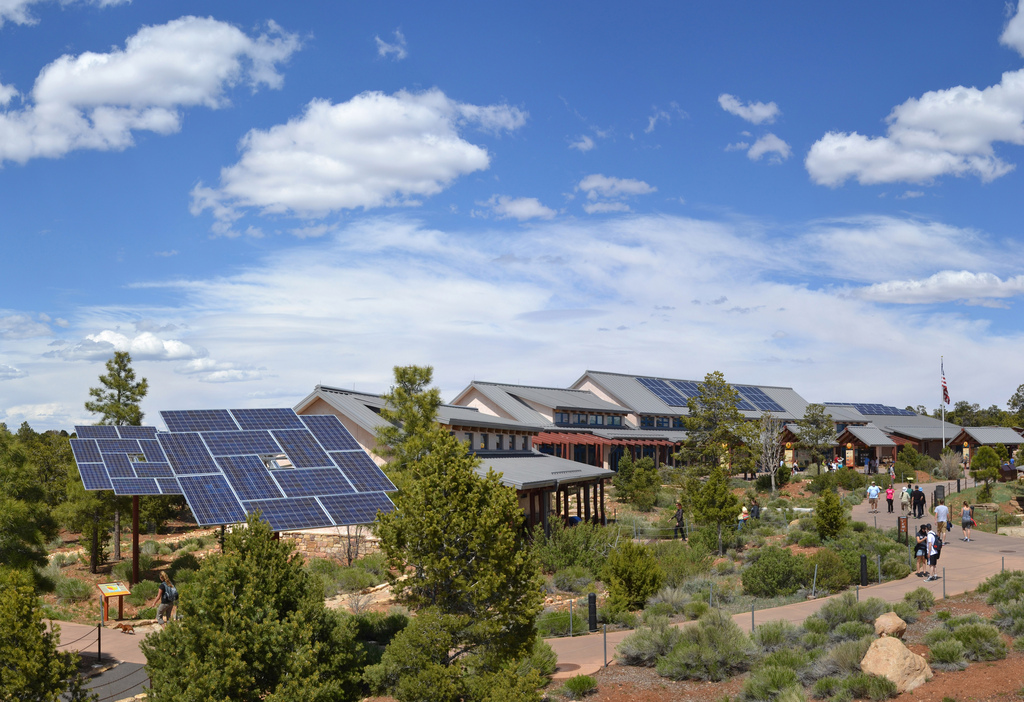Can Clean Energy Gain an Edge?
By Michelle De Blasi and Chris Davey
The clean energy sector in Arizona and in the U.S. has expanded tremendously in the last decade. Despite its expansion, however, clean energy has encountered a number of hurdles during its development, including the continual shift in state and federal policy, intermittency issues and access to capital. Just like building a strong investment portfolio, it is critical to diversify and pursue multiple resources with energy. Arizona has the potential to become a clean energy hub for the southwest region while also contributing to the energy security of the U.S., but it will need supportive policies to realize that potential.
Fossil fuels make up a substantial portion of the U.S. energy generation resources. Although several states have retired their coal generation resources, currently those resources are more often being replaced with natural gas than with clean energy. These decisions are being driven largely by the price of natural gas and new discoveries through hydraulic fracturing or “fracking,” the process of drilling and injecting fluid into the ground to fracture shale rocks and release the natural gas trapped inside. Natural gas prices have historically been volatile, and with liquefied natural gas terminals being developed for export, this pricing trend is likely to continue.
TOO LITTLE RENEWABLE ENERGY IN ARIZONA
Arizona is one of the few states in the U.S. that doesn’t have its own oil or natural gas resources, and most of its coal reserves reside on Sovereign Nations, namely Navajo and Hopi. When one considers the lack of diversity in its natural resources—aside from an abundance of sunshine and a small amount of wind—it is unfortunate that less than 2 percent of Arizona’s entire energy mix is renewable. The lack of widespread acceptance and deployment of renewable energy in Arizona can be attributed significantly to the uncertainty in policy.
The inability to provide power on a continual and firm basis, referred to as intermittency, is another issue that has been difficult to overcome for much of the clean energy sector, particularly solar and wind. Some in the clean energy sector are addressing the intermittency of renewable resources by taking advantage of natural gas generation. Intermittent resources augmented by natural gas can provide a firm carbon-reduced and secure power source until other utility-scale renewable options become available. The 200 MW Solar Tower being delivered by EnviroMission in La Paz County is one example of the resources that can provide the reliable energy required to satisfy the utilities’ demands of firm power.
STABLE POLICY AND INVESTMENT CAPITAL NEEDED
Lack of a clear and stable policy and regulatory environment results in further difficulties for capital investment to flow into the clean energy sector. The continued adoption and expansion of the clean energy sector cannot happen until investment capital is easier to access, and securing capital remains an issue for much of the industry. In the case of Master Limited Partnerships (MLPs) and Real Estate Investment Trusts (REITs) that allow tax benefits to be enjoyed by a larger investor base, tax code changes could enable renewables and efficiency measures to leverage the same tools that have enabled the expansion of oil and gas exploration in the U.S. There is currently legislation proposed to expand the use of both MLPs and REITs to the renewable energy industry.
A diverse energy portfolio that includes traditional fossil fuels, nuclear power and clean energy improves energy security and reliability. Energy security is a term for the interplay between energy availability and the effect on national security. According to The Clean Edge: The Clean-Tech Market Authority 2012 State Clean Energy Index: Executive Summary, the U.S. Department of Defense is the world’s largest single consumer of energy, spending about $15 billion a year and accounting for 70 percent of the energy use of the federal government. Every dollar increase in the price of oil adds $30 million to the Navy’s budget alone. For this reason, the federal government recently issued a $7 billion request for the development of renewable energy projects to increase the energy security of the U.S.
In Arizona, the industry mindset must shift from viewing renewable generation and energy efficiency as a means to satisfy a renewable energy mandate to an opportunity to stimulate and enhance the economy and diversify the state’s energy mix. New business and development is attracted by consistent policy and access to capital and, to be successful, Arizona must adopt an energy policy conducive to both.
Photo by the Gand Canyon NPS







